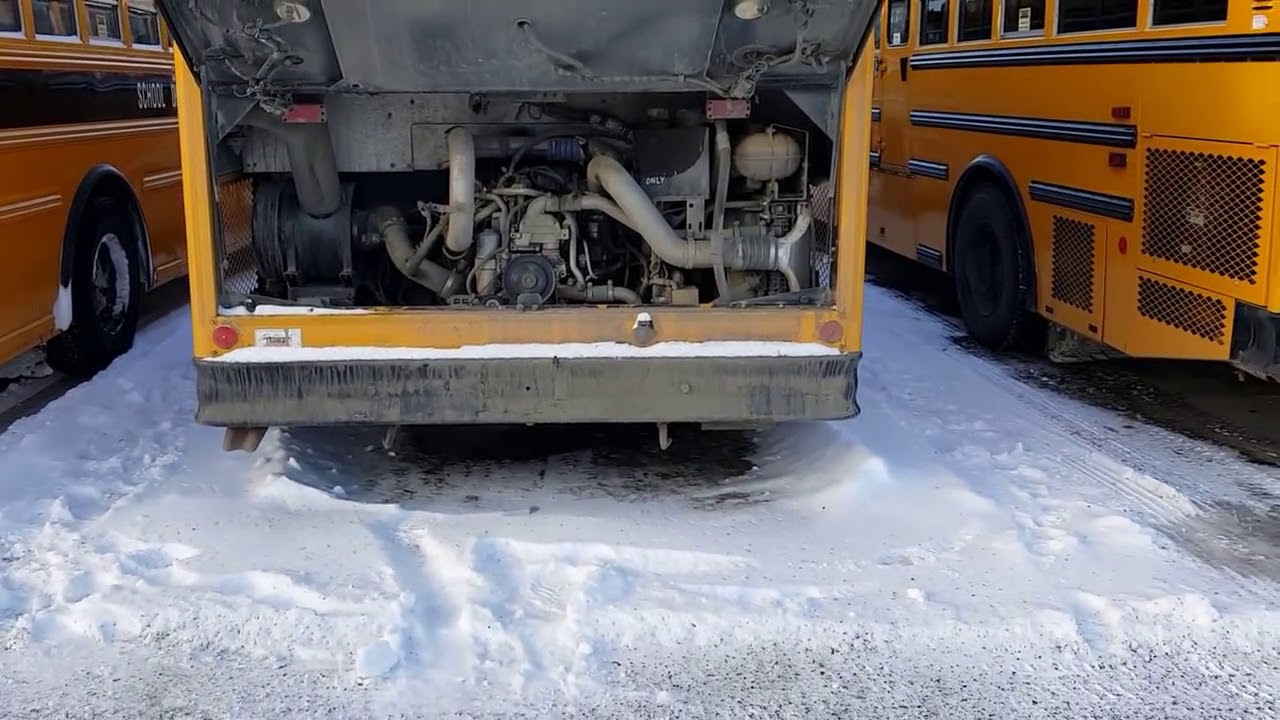This bus is one of our older non emission diesel engines. It’s a 2004 Mercedes MBE 900 in a Thomas HDX pusher school bus. As soon as oil pressure is reached I flipped on the high idle switch to get away from over fueling with unburned raw diesel which is very unhealthy for components related to the injection system.
Since diesels rely on compression combined with heat for combustion you can imagine how rough it will run when temperatures drop to -20 and lower. If any diesel idles in the winter for extended periods of time the injection system, valves, cylinders and pistons build up harmful carbon because of the poor fuel efficiency.
So once the diesel engine starts, builds up proper oil pressure and high idles for a few minutes it’s time to put it to work. They are designed to take the load…. and engine temperature builds up much faster. High RPMs without a load is not a good practice especially in low temperatures. Our older fleet use a 1500 watt block heater and that’s it. The newer buses now have diesel coolant heaters made by Espar and Webasto.
These diesel coolant heaters don’t go without their problems. We have to keep on top of fault codes when they occur. What I was talking about earlier concerning over fueling happens with the coolant heaters as well since they burn diesel to operate. If they do not start properly carbon and soot collects in the combustion chamber and eventually we have to remove and disassemble them for cleaning.
The worst thing for an emission controlled diesel engine is to run it cold for long periods of time. The product of combustion is a sticky mess that collects in the exhaust system primarily in the DPF (diesel particulate filter) commonly known as the muffler. The faster these diesel engines warm up the less build up of contamination there will be. There would be less parked regenerations (a programmed procedure that cooks out the soot and ash from the exhaust system).
If we had the luxury and money to park our buses inside a heated shop there would be a huge drop in service calls and break downs. This is not a perfect world so no such luck for us. We just have to make sure all systems are healthy and the engines are ready to go any time of the year. That’s why they call it a preventive maintenance program.







